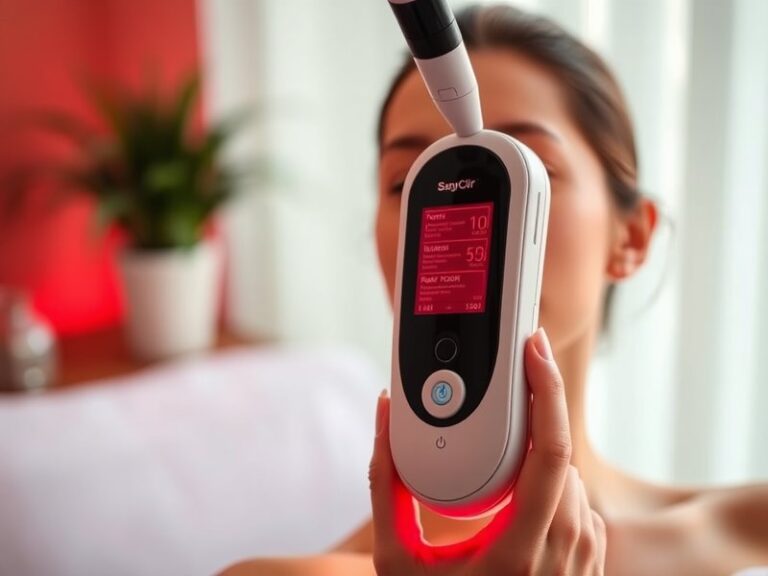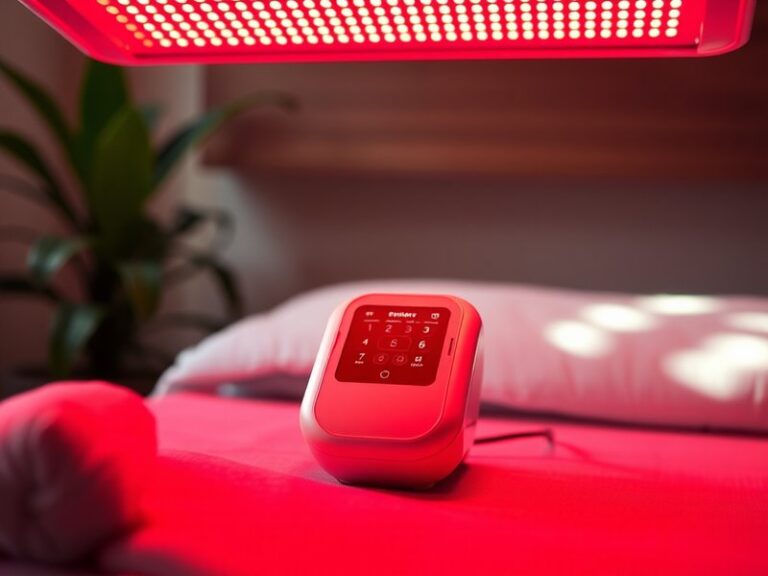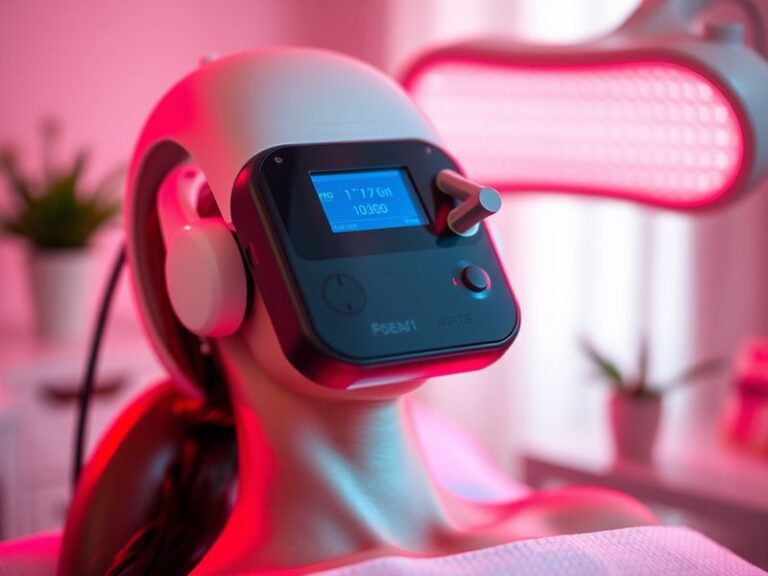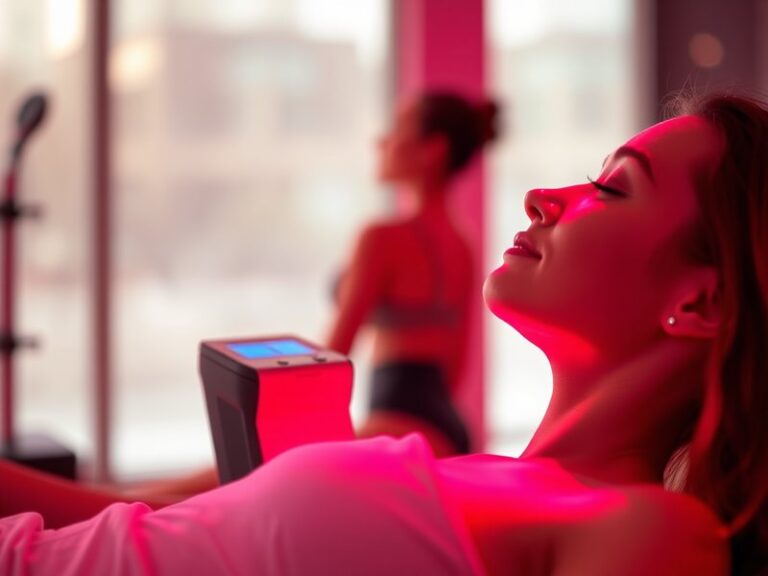Can Red Light Therapy Be Done At Home?
Can Red Light Therapy Be Done At Home?
Can simple light give your skin a youthful glow or help heal your wounds?
In recent years, red light therapy has gained popularity as a non-invasive treatment option for various skin and health issues. With the advent of affordable at-home devices, many people wonder if they can reap the benefits of this innovative therapy without frequent trips to a clinic. This article will discuss what red light therapy is, its benefits, the feasibility of home treatment, important considerations, viable alternatives, and answer frequently asked questions.
Key Takeaways
- Red light therapy promotes healing and skin rejuvenation by utilizing specific wavelengths of light.
- At-home devices can provide effective treatment, but they require proper knowledge and care for safe usage.
- Consider your health conditions and device quality before starting red light therapy at home.
What is Red Light Therapy?
Red light therapy (RLT) is a therapeutic technique that uses low-level wavelengths of red light to stimulate cellular activity. It is believed to enhance mitochondrial function, leading to increased energy production in cells. Originally used in clinics for medical treatments, including wound healing, inflammation reduction, and skin rejuvenation, RLT has gained popularity for at-home use.
The therapy involves exposing the skin to red or near-infrared light, typically within the 600 to 1000 nanometer wavelength range. This exposure can promote a variety of health benefits, and devices like LED light panels, handheld devices, and targeted spot treatments have become widely accessible.
What are the Benefits of Red Light Therapy?
The following points will explore the advantages of red light therapy in detail.
Enhanced Skin Health
Red light therapy promotes collagen synthesis and cellular repair, which may reduce wrinkles, fine lines, and other signs of aging. Users have reported improvements in skin texture and tone after consistent use.
Pain Relief and Inflammation Reduction
Studies have shown that red light therapy can help reduce inflammation and accelerate healing in tissues. This makes it a potentially powerful tool for those suffering from chronic pain or recovering from injuries.
Improved Mood and Sleep Quality
Emerging research suggests that exposure to red light may help regulate circadian rhythms, contributing to better sleep quality. Additionally, the therapy has been associated with mood improvement, possibly due to its effects on cellular function and overall well-being.
Faster Wound Healing
Red light therapy has been shown to enhance wound healing processes. Its ability to increase microcirculation may promote faster recovery from cuts, burns, and surgical sites.
Is it Possible to Do Red Light Therapy at Home?
Absolutely, red light therapy can be effectively performed at home using various devices designed for this purpose. From handheld wands to larger light panels, there are numerous options available for personal use. However, understanding how to use these devices safely is crucial to avoid ineffective treatment or adverse effects.
What are the Advantages of Doing Red Light Therapy at Home?
Convenience is a significant advantage of at-home therapy.
Learn all about it in Does Red Light Therapy Emit EMF?
Cost-Effective
Investing in a home device can save money in the long run compared to frequent visits to a clinic.
Flexible Scheduling
You can choose treatment times that fit your lifestyle without being restricted to clinic hours.
Privacy and Comfort
At-home therapy allows users to relax in their own space, making the experience more enjoyable.
Immediate Access to Treatments
Should you need quick treatment following a workout or injury, having a device at home provides immediate solutions.
What are the Disadvantages of Doing Red Light Therapy at Home?
While at-home therapy has its perks, there are potential challenges to consider.
Lack of Professional Guidance
Without the expertise of a trained practitioner, users may misuse devices or misunderstand treatment protocols.
Device Quality Variation
Not all red light therapy devices are created equal. Some may not deliver the appropriate wavelength, intensity, or exposure time necessary for effective treatment.
Potential for Overuse
Determining the right dosage can be challenging—too much light exposure could lead to skin irritation or other issues.
What are the Things to Consider Before Doing Red Light Therapy at Home?
Before starting red light therapy at home, consider the following important factors.
Device Specifications
Choose a device that clearly indicates its wavelength, power output, and treatment duration options. Research reputable brands known for their quality and efficacy.
Skin Sensitivity and Health Conditions
If you have existing skin conditions, sensitivities, or are pregnant, consult a healthcare provider before starting RLT.
Consistency and Commitment
To see visible results, consistency is key. Determine a schedule that you can commit to without making it feel like a chore.
Treatment Goals
Define your goals for using red light therapy. Whether it’s enhancing skin health, reducing pain, or improving mood, having a clear purpose can guide your approach.
What are the Alternatives to Red Light Therapy?
If red light therapy doesn’t seem right for you, there are alternative options to consider.
Photodynamic Therapy
This clinically supervised treatment involves a combination of light and photosensitive drugs to treat conditions like acne and certain skin cancers.
Discover our insights Is Red Light Therapy Worth It?
LED Light Therapy Masks
Similar to RLT, these masks use various light colors to address specific skin concerns. They can often be used at home and come in various price ranges.
Chemical Peels
Chemical peels offer a more aggressive approach to skin rejuvenation and can improve texture, pigmentation, and more, but they should be done professionally for safety.
Microdermabrasion
This non-invasive procedure exfoliates the skin and promotes new cell growth. It’s effective for a variety of skin issues but typically requires professional treatment.
Conclusion: Is it Recommended to Do Red Light Therapy at Home?
Red light therapy can indeed be performed safely and effectively at home, provided you are informed about device quality, suitable usage, and personal health considerations. While it offers numerous benefits, potential downsides must be weighed carefully. With the right preparation and mindset, red light therapy can be an excellent addition to your home wellness routine.
Frequently Asked Questions
How often should I use red light therapy at home?
Most recommendations suggest starting with 3-5 sessions per week, gradually tailoring the frequency based on your response to treatment and specific goals.
Are there any side effects of red light therapy?
Generally, red light therapy is considered safe, with minimal side effects. However, some users may experience redness or irritation if overexposed.
How long does it take to see results from red light therapy?
Results can vary, but many users report noticeable changes within a few weeks of regular treatment. For optimal results, consistency and timing are essential.
Can I use red light therapy if I have a medical condition?
It’s always best to consult a healthcare professional before beginning any new therapy, especially if you have existing health concerns or conditions.
Is all red light therapy the same?
No, the effectiveness depends largely on the wavelengths emitted, device quality, and intended use. Look for research-backed devices to ensure positive outcomes.






